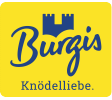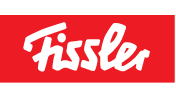Purchase-to-Pay process – P2P
- Comprehensive cross-departmental collaboration
- Faster, more efficient processing
- Real-time status updates
What is purchase-to-pay?
Purchase-to-pay (P2P), also known as procure-to-pay, is an internal business process encompassing all activities from procurement to invoice payment. This process covers the entire procurement cycle, from purchasing goods and services to making payments and tracking orders. P2P is not a single procedure but a collection of various individual processes occurring across different company departments. These steps are integrated and streamlined using purchase-to-pay software, creating a fully connected procurement workflow. The goal of a digital P2P process is to manage procurement and payment tasks efficiently, facilitating smooth data exchange between departments. Additionally, it aims to reduce costs and minimize errors associated with manual processing.

Definition and process steps
The purchase-to-pay (P2P) process involves several steps, starting from ordering goods or services to paying invoices. It can be divided into two main areas: procurement (purchase) and payment (pay). Here’s an overview of how it works:
Procurement-Related Process (Purchase)
- Identification of requirements: The need for goods or services within the company is identified, arising from consumption, production requirements, or other business needs.
- Requirement request: Once identified, the department manager or an employee submits a request detailing the needed quantity, specifications, and any delivery deadlines.
- Approval: The request goes through an approval process where it is reviewed and either approved or rejected to ensure alignment with company policies and budget.
- Order: The approved request leads to placing an order with the selected supplier.
- Order confirmation: The supplier sends back an order confirmation, detailing terms, prices, and delivery times, thus accepting the order.
- Delivery: The goods are delivered or services rendered, involving the transportation of products to the company's location.
- Incoming goods inspection: Upon delivery, the company inspects the goods to ensure they meet the order specifications, including quality, quantity, and adherence to specified standards.
Payment-related process (Pay):
- Invoicing: The supplier sends an invoice to the company for the delivered goods or services. The invoice should align with the previously agreed-upon terms and prices.
- Invoice verification and approval: The responsible department reviews incoming invoices to ensure they are accurate and consistent with the agreed terms. The invoice is then approved.
- Payment authorization: Once approved, the invoice is authorized for payment, which may involve sending payment instructions to the finance department.
- Payment: The company pays the invoice according to the agreed payment terms.
- Accounting and tracking: All transactions in the purchase-to-pay process are recorded and tracked in the accounting system to ensure accurate documentation of the company's expenses.
Arrange a no-obligation meeting and give us 15 minutes of your time to inspire you!
State-of-the-art standard P2P solutions
Digitized procurement process with full transparency
In the future, your P2P process can be automatically initiated upon receipt of a procurement request. The requester can submit the procurement request through an up-to-date web interface, which then forwards it for review and approval. From there, the procurement request can be directly sent to purchasing via the ERP system to place an order. With the digital edoc solution, you gain complete transparency over the entire procurement process, allowing you to track the status of each request at any time. Each request, along with its associated workflow log, can be easily linked to the ERP order, the delivery note, and subsequent incoming invoices, which are automatically processed using the edoc invoice system.
Find out more about the procurement process
Fully automated order confirmation from any source
Our flexible input solutions help you to record all incoming order confirmations regardless of form and format and to transfer them to the next automated process. Your data and the digital document will be made available for viewing. This saves the user a huge amount of manual typing and, at the same time, greatly reduces the number of errors. This results in satisfied users who can concentrate on their core tasks and significantly improved process performance!
Find out more about order confirmation
Vastly accelerated incoming invoice processing
Based on your ERP or financial accounting system, edoc offers ready-made software solutions that take over all the main tasks of the invoicing workflow. Entire work steps that are currently manual and prone to errors can be automated, thereby simplifying and accelerating the entire process. All incoming invoices, whether they arrive by post, e-mail, in ZUGFeRD format, as an XRechnung or via an invoice portal, are automatically and reliably recognized by high-performance document readers (OCR) and transferred to a digital process for further processing. This allows your accounting department to focus fully on the technical validation of the recognized data before forwarding the e-invoice to the verification and approval workflow. Sophisticated user interfaces ensure ease of use and deliver the right information to the right place at the right time. This saves time, creates transparency and speeds up your business-critical processes many times over!
Find out more about incoming invoice processing
One of the main advantages of edoc solutions for your P2P processes is their great flexibility. This leaves you free to pursue your chosen strategy with different ECM systems. We recommend cloud installations with d.velop documents or Microsoft 365. However, solutions can be equally stable and powerful in hybrid use or on-premises and with any other system.
Make your purchase-to-pay strategy a digital success
Would you like to digitize your analogue processes or have you already digitized individual processes and are now planning to combine the individual processes into a fully integrated purchase-to-pay process? As a first step, you should analyse your existing P2P processes to determine which departments and employees are involved and which problems regularly occur. Conduct a thorough review of both your existing procurement process and your accounting processes and identify inefficient processes. In which areas is the workload particularly heavy and the workload the highest? Also analyze the communication between your company and your suppliers - from the order to the order confirmation as well as the internal inspection and approval processes.
A thorough analysis forms the foundation for successfully digitizing your purchase-to-pay operations. Next, select a software solution that aligns with your company's needs and objectives. Consider factors like automation capabilities, user-friendliness, integration potential with existing systems, and adherence to industry standards. Implementing digital solutions can boost efficiency, cut costs, enhance process transparency, and bolster your company's competitive edge.
The software behind it all
edoc procurement
edoc procurement covers the procurement process from the initial notification of requirements to the transfer into your ordering or ERP system. It’s the ideal solution for efficiently handling the procurement of goods and services in the area of indirect purchasing. The main feature is the flexible workflow management that lets you easily create custom workflows tailored to your company’s specific needs.
edoc order confirmation
edoc order confirmation manages incoming order confirmations entirely digitally. Incoming confirmations are captured automatically, with the header and line-item data compared against the purchase order to instantly identify discrepancies. This enables you to respond quickly to an order confirmation that deviates from the original order.
edoc invoice
Manage your incoming invoices digitally, whether they’re order-related or not. The standard software edoc invoice draws on experience from numerous successful workflow projects in this field. edoc invoice provides a state-of-the-art technological platform built on the latest development and control technologies for optimized performance. It runs in the cloud, on-premises or as a hybrid solution.
Frequently Asked Questions
Supplier and master data can be imported directly from your ERP systems and integrated into edoc procurement.
Yes. Requisitions can be populated with data from framework agreements, catalogs, or price lists, so there’s no need to add this information manually.
Our solutions can be connected to virtually any ERP system. Examples include Microsoft Dynamics 365, SAP, Infor COM, and SHCware.
Various DMS/ECM systems, such as d.velop documents, can also be integrated. Documents such as quotes, order confirmations, or other records — are automatically archived in your document management system.
In addition, purchase order data generated in edoc procurement can be automatically transferred via interfaces to your invoice processing solution (e.g., edoc invoice).
Workflows can be tailored to your requisition and ordering processes. You define which requisition types exist in your organization and configure the workflow steps accordingly. The approval workflow offers additional flexibility, allowing you to set up an 8-level approval process at the line-item level.
In edoc procurement, workflow steps are restricted by user groups, ensuring that access to sensitive data is only granted to authorized users.
We are always here for you








